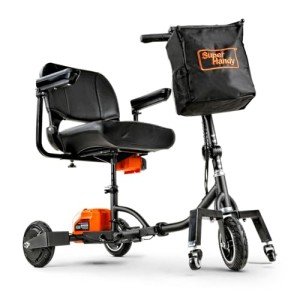The Top Mobility Aids Gurus Are Doing Three Things
Understanding Mobility Aids: Enhancing Independence and Quality of Life
As society continues to age and people increasingly seek methods to maintain self-reliance, the need for mobility aids has never been more pertinent. folding mobility scooters with basket , which include a series of devices developed to help people with walking or walking around, play an important function in promoting mobility, improving security, and improving overall lifestyle. This article will explore the various kinds of mobility aids, their benefits, considerations for choice, and answer some often asked questions.
Types of Mobility Aids
Numerous mobility aids are available, each created to resolve particular needs. The following table summarizes a few of the most common types of mobility aids and their features.
Type of Mobility Aid
Description
Best Suited For
Key Features
Walking canes
A handheld stick offering assistance and balance.
People who need very little help.
Light-weight, portable, adjustable height.
Walkers
Four-legged frames supplying stability.
Those needing considerable assistance while walking.
Foldable, some with wheels, included safety functions.
Rollators
Wheeled walkers with a seat for resting.
Individuals needing mobility with the choice to rest.
Brakes, baskets for individual products, adjustable height.
Wheelchairs
Chairs with wheels for people with restricted mobility.
Those not able to stroll or needing comprehensive support.
Manual or powered choices, adjustable seating.
Scooters
Motorized devices for bigger distances.
Individuals with restricted stamina but requiring independence.
Different sizes and styles, frequently easily transportable.
Crutches
Assistance devices put under the arms or forearms.
People recovering from lower limb injuries.
Adjustable, lightweight, needs upper body strength.
Stairlifts
Mechanical devices for moving in between floorings.
Users facing obstacles in multi-level homes.
Personalized for different staircases, automated.
Benefits of Mobility Aids
Mobility aids offer a selection of advantages that can substantially enhance the lives of people dealing with mobility difficulties. Some notable benefits include:
Increased Independence: Mobility aids empower people to move easily without relying on others for assistance, consequently improving their self-confidence and self-esteem.
Enhanced Safety: Using mobility aids can minimize the threat of falls and injuries, especially for older adults or those with balance issues.
Enhanced Quality of Life: By helping with mobility, people can take part in social activities, go to events, and take pleasure in life more completely, contributing to better psychological and mental health.
Rehabilitation Support: After surgery or injury, mobility aids provide needed assistance and stability, assisting in healing and rehab procedures.
Ease of access: Many mobility aids are developed to be used both indoors and outdoors, making sure that individuals can navigate various environments with ease.
Factors to Consider When Choosing Mobility Aids
Choosing the suitable mobility help needs careful consideration of numerous elements, including:
Factor
Factors to consider
User's Needs
Evaluate the level of mobility needed; consider whether the user needs short-term or long-term support.
Physical Limitations
Evaluate the user's strength, balance, and coordination to figure out the best type of help.
Setting
Think about the primary environments where the help will be used, such as home, outdoors, or specific surfaces.
Weight and Portability
Ensure that the picked device is manageable concerning mobility and storage, especially for outside usage.
Budget
Mobility aids come in a series of costs; think about insurance coverage and available funding options.
Adjustability
Pick aids that can be changed for height and convenience to accommodate development or changing needs.
Often Asked Questions About Mobility Aids
1. How do I know if I need a mobility help?
Many elements can indicate the requirement for a mobility aid, such as trouble strolling or balancing, fatigue while standing, or a recent surgical treatment affecting mobility. Consulting with a healthcare specialist can provide guidance tailored to individual requirements.
2. What types of mobility aids are covered by insurance?
Coverage varies between insurers, however many provide choices for long lasting medical equipment, which usually consists of wheelchairs, walkers, and some kinds of walking sticks. Examine with your insurance supplier for particular coverage information.
3. Can mobility aids be utilized outdoors?
Yes, many modern mobility aids are created for outside use. Rollators, scooters, and some walkers are geared up with features for stability and ease of usage on different terrain.
4. How do I maintain my mobility help?
Regular maintenance includes looking for any wear and tear, making sure that parts such as wheels, brakes, and frames are operating properly, and cleaning up the devices as needed. Following the maker's guidelines is crucial for security.
5. Exists a danger of becoming depending on mobility aids?
While some users might end up being reliant on mobility aids, they are designed to promote self-reliance and mobility. Gradually utilizing a mobility help can improve self-confidence and aid keep physical strength and coordination.
Mobility aids are indispensable tools that empower individuals to conquer physical difficulties, promoting self-reliance and enhancing quality of life. By comprehending the numerous kinds of mobility aids offered, their benefits, and crucial factors for consideration, households and caretakers can make informed choices that best satisfy the requirements of their enjoyed ones. With the right assistance, those with mobility obstacles can lead satisfying and active lives, totally free to check out the world around them.
